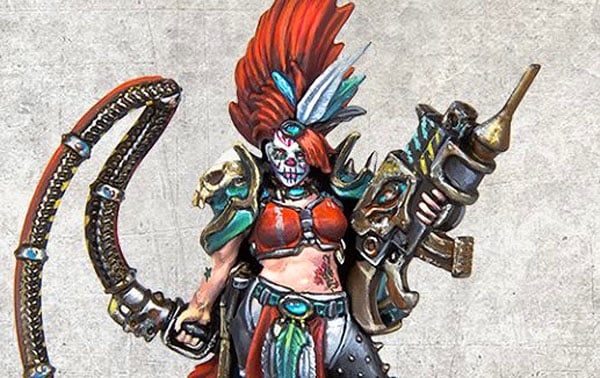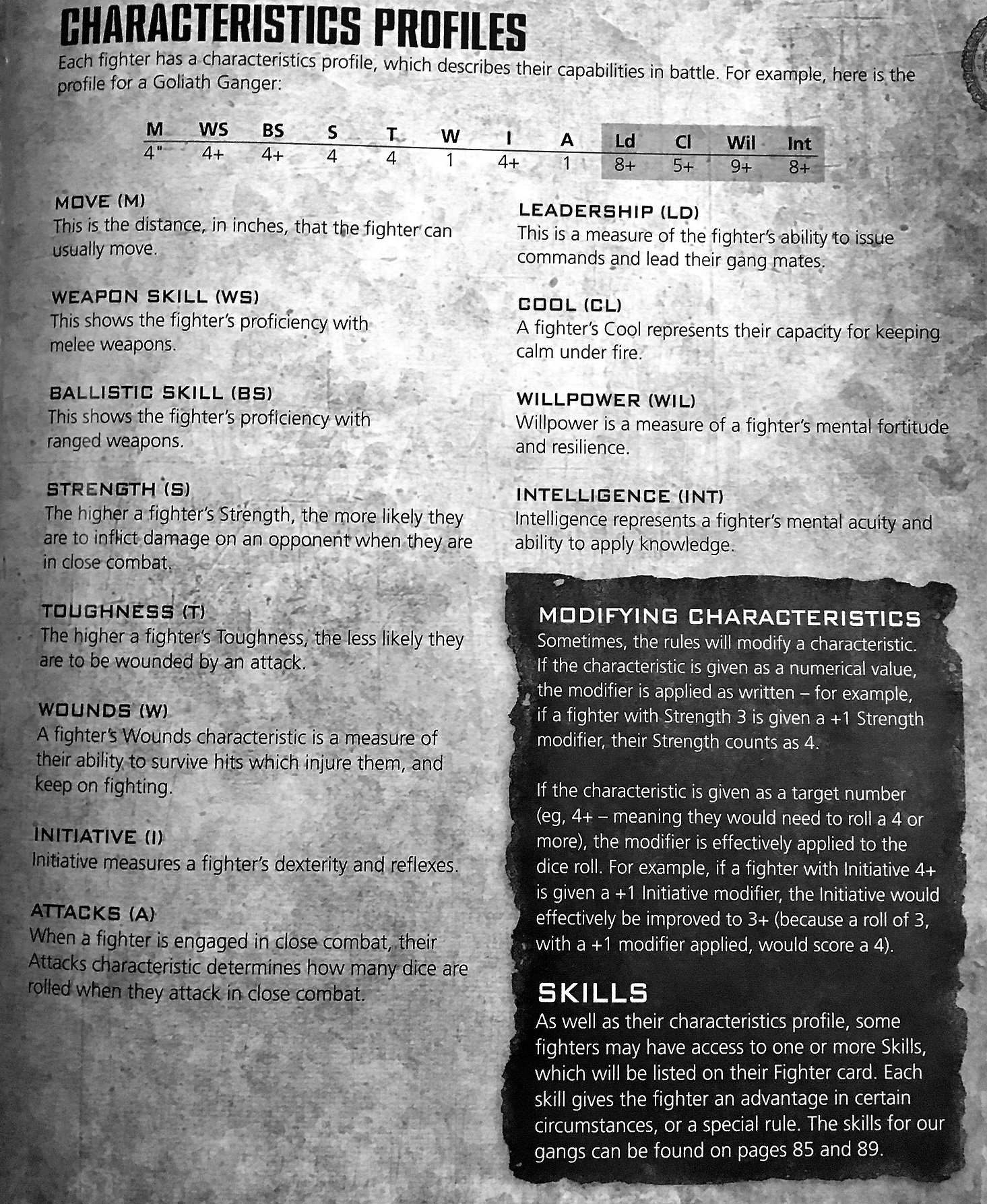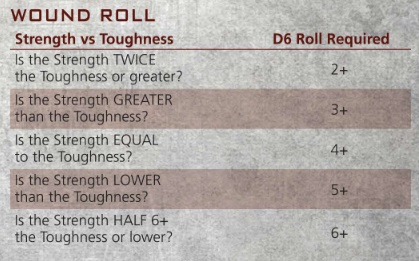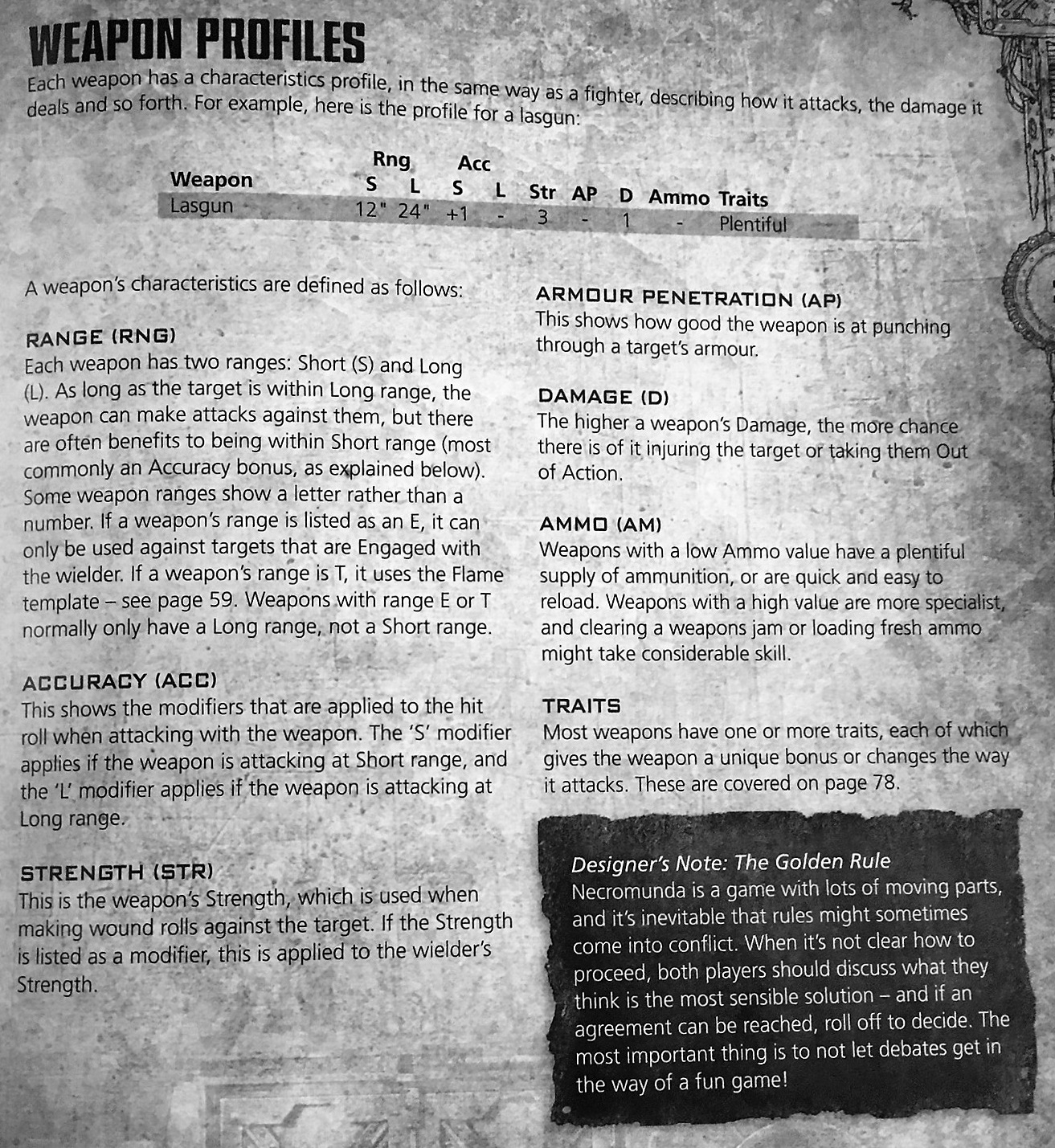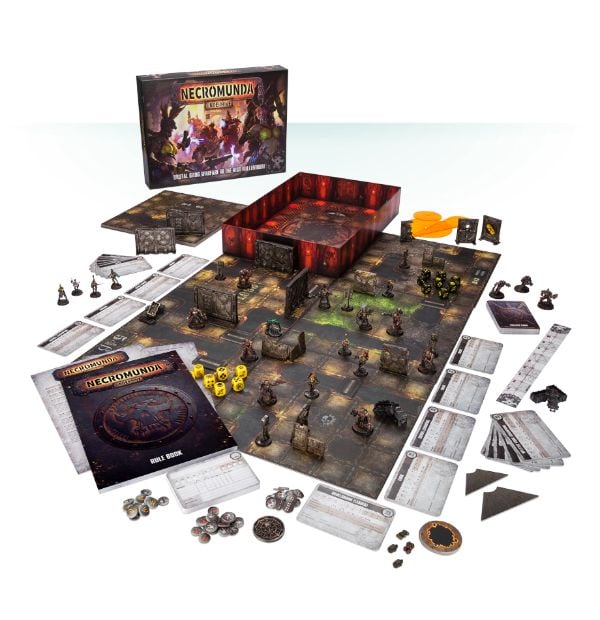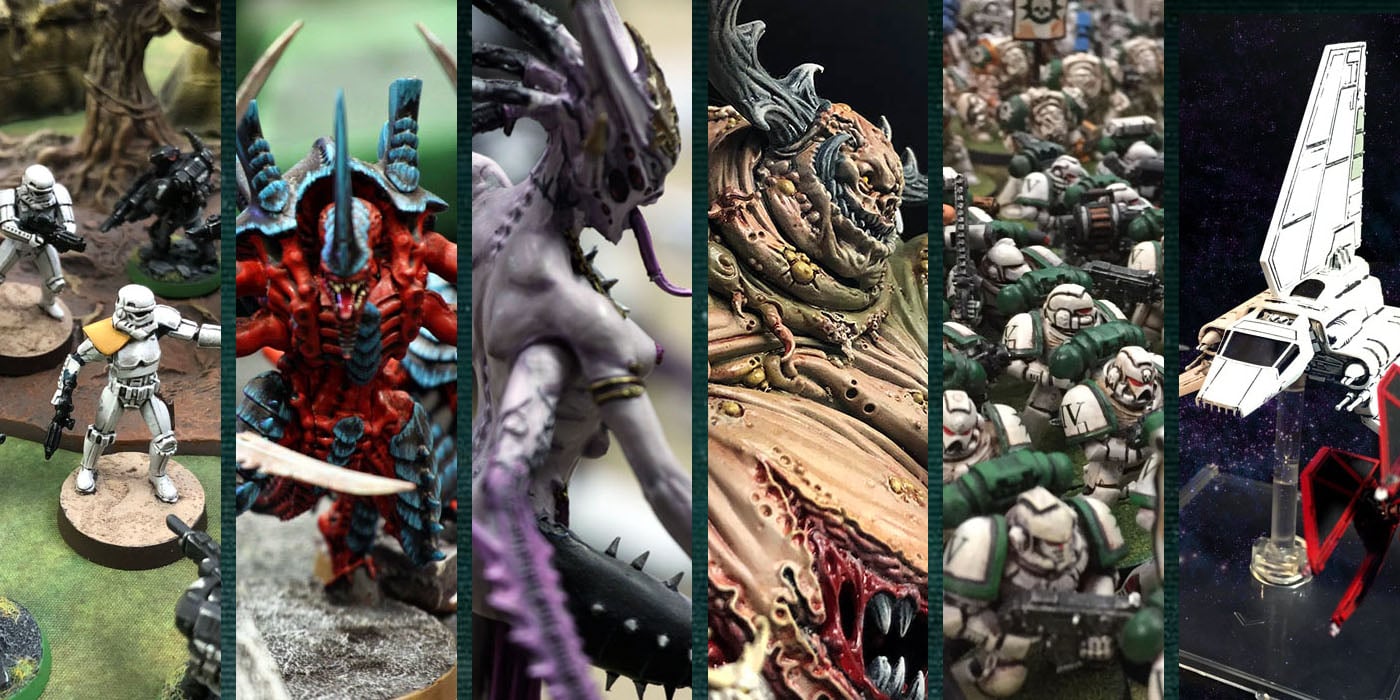Necromunda: Profile Breakdown
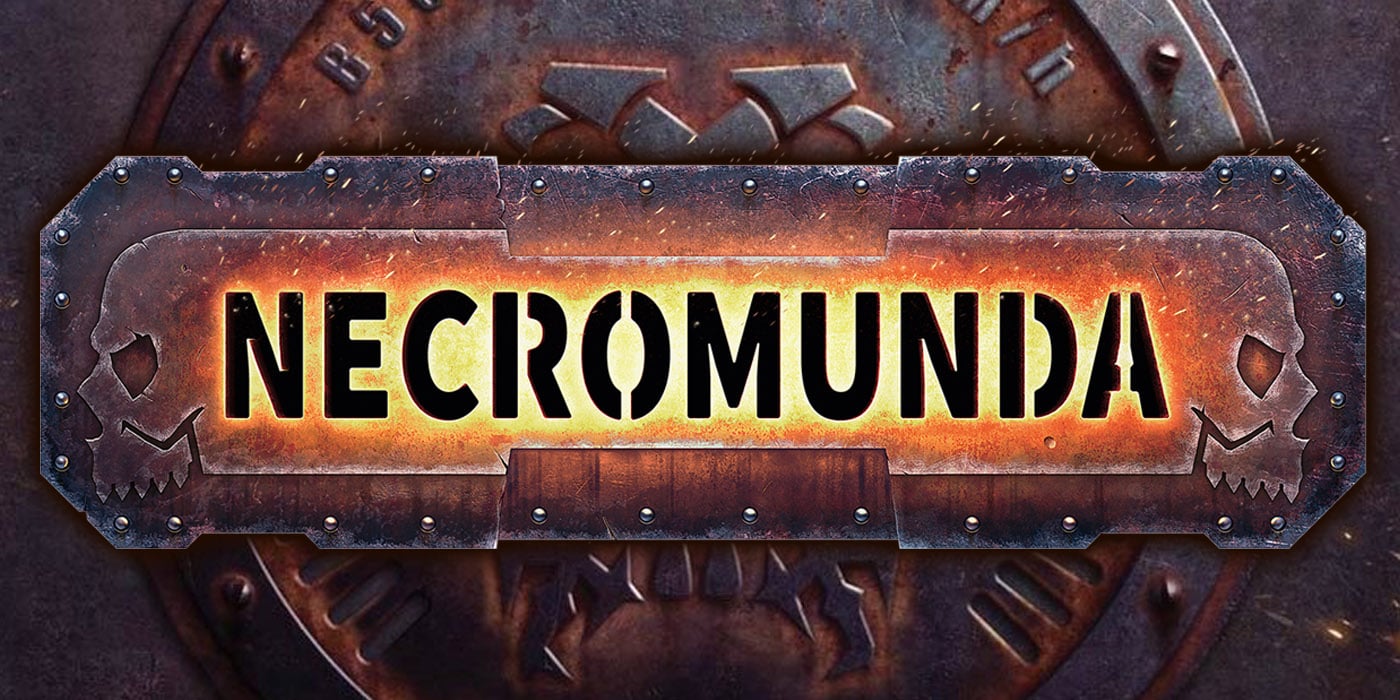

Necromunda Gangers have a slightly different profile that what you might be used to – let’s take a better look!
The Gang Wars in the Underhive have returned and we’re pretty excited to see what the future holds for Necromunda. If you’re coming from Warhammer 40,000, the rules are going to be similar but tweaked slightly to fit the smaller scale skirmish battles represented by these gangers fighting it out. We’re going to take a look at these stats from a basic level – this might be a little redundant for veterans, but we were all new at some point. So let’s take a look at each stat and see what it does:
(M) Move – This is the movement stat and represents how far gangers can move in inches.
(WS) Weapon Skill – This is the stat for attacking in melee.
(BS) Ballistic Skill – This is the stat for attacking with ranged weapons.
(S) Strength – This is the stat rating how likely gangers are able to inflict damage in melee. It can also be used for other test like being knocked back. (The higher the better.)
(T) Toughness – This is the stat showing how likely a ganger will be wounded by an attack. A low score means it is easier to wound them, a higher score means they are more resilient vs damage.
(W) Wounds – This stat is a measure of a gangers ability to survive attacks that injure them and keep fighting. A higher Wounds stat means it will take more attacks to down them.
(I) Initiative – This stat is represents a ganger’s dexterity and reflexes.
(A) Attacks – This stat is the number of dice the ganger rolls when they attack in close combat.
(Ld) Leadership – This is a measure of a fighter’s ability to issue commands and lead their gang – it’s used with some of the more advanced rules. Leadership is a 2D6 check.
(Cl) Cool – This stat represents how calm the ganger stays under fire. It is a 2D6 check.
(Wil) Willpower – This stat represents the mental fortitude of a ganger. It is a 2D6 check.
(Int) Intelligence – This stat represents the mental prowess and ability of the ganger to apply knowledge. It is a 2D6 check.
For all stats with a “+” next to them, you’re looking to roll that number or higher for a successful test.
As an example, if the ganger above was attempting to make a melee attack, he would have 1 attack which would mean he would get to roll 1 D6 in melee. He is looking to score a 4 or higher on 1D6 for a successful hit. However, if he was making a Cool Check, he would be looking to score a 5 or higher on 2D6.
Modifiers to Characteristics
Modifiers are applied to the die rolls before you check to see if they are successful. So, if you need a 4+ for a success and you roll a 3 you would fail, unless you had a modifier of +1 (or more) on the roll. Note: A Roll of a “natural” 1 when making an attack or rolling to wound always fails.
Now, I bet there are some folks asking “what about re-rolls and modifiers, how will those work?” I’m right there with you. After checking through the advanced rules there are no mentions of re-rolls in the book.
To Wound Chart
When an attack successfully hits a target, you must check to see if the attack hits hard enough to damage the target using the chart below:
You can download a reference sheet from Games Workshop HERE
Weapon Profiles
Much like gangers, each weapon has a unique profile. Let’s go over those stats as well:
(Rng) Range – Each weapon has two ranges, Short (S) and Long (L). The number below represents the maximum distance to fall within that range. The weapon above has a Short range of 12″ and a Long range of 24″. If the target is over 12″ but within 24″ it would be a long range shot. If the target is at 12″ or closer, it’s considered a short range shot.
(Acc) Accuracy – This is typically a modifier for using this weapon at the listed range. In the example weapon above, it has a +1 modifier at short range and a “-” for long range (meaning no modifier at all).
(Str) Strength – Much like the ganger profile, weapons also have a strength stat as well. The higher the number the easier the weapon can damage it’s target.
(AP) Armor Penetration – Shows how good the weapon is against armor. Generally, this will be a negative modifier that is applied to the target’s armor save. For example, a Power Sword has an AP of -2, causing it to apply a -2 modifier to a target’s armor save. For most gangers in the starter box, that will simply bypass their armor completely!
(D) Damage – Damage is applied to the target’s wound stats and reduces it by the listed amount. When a target drops to 0 wounds or less, it is “out of action” – remove them from play. The Advanced rules have a lot more detail on how this works but for now, we’re going to leave it at that.
(Am) Ammo – This represents how easy or difficult it is to get ammo. The example profile actually has a typo above (shocked!) and Lasguns have an actual ammo value of +2. It’s relatively rare to run out of ammo for them. Where as a Grenade Launcher has an ammo value of 6+. These checks are used to determine if you shot your last bullet/bolt/blast or not! In the basic rules, you don’t need to worry about running out of ammo – but in the advanced rules you do.
Traits – Some weapons have additional traits. Those will be described in the weapon profiles.
Necromunda is up for Pre-Order now and starts shipping on the 24th! Are you ready to carve out YOUR turf in the Underhive?

